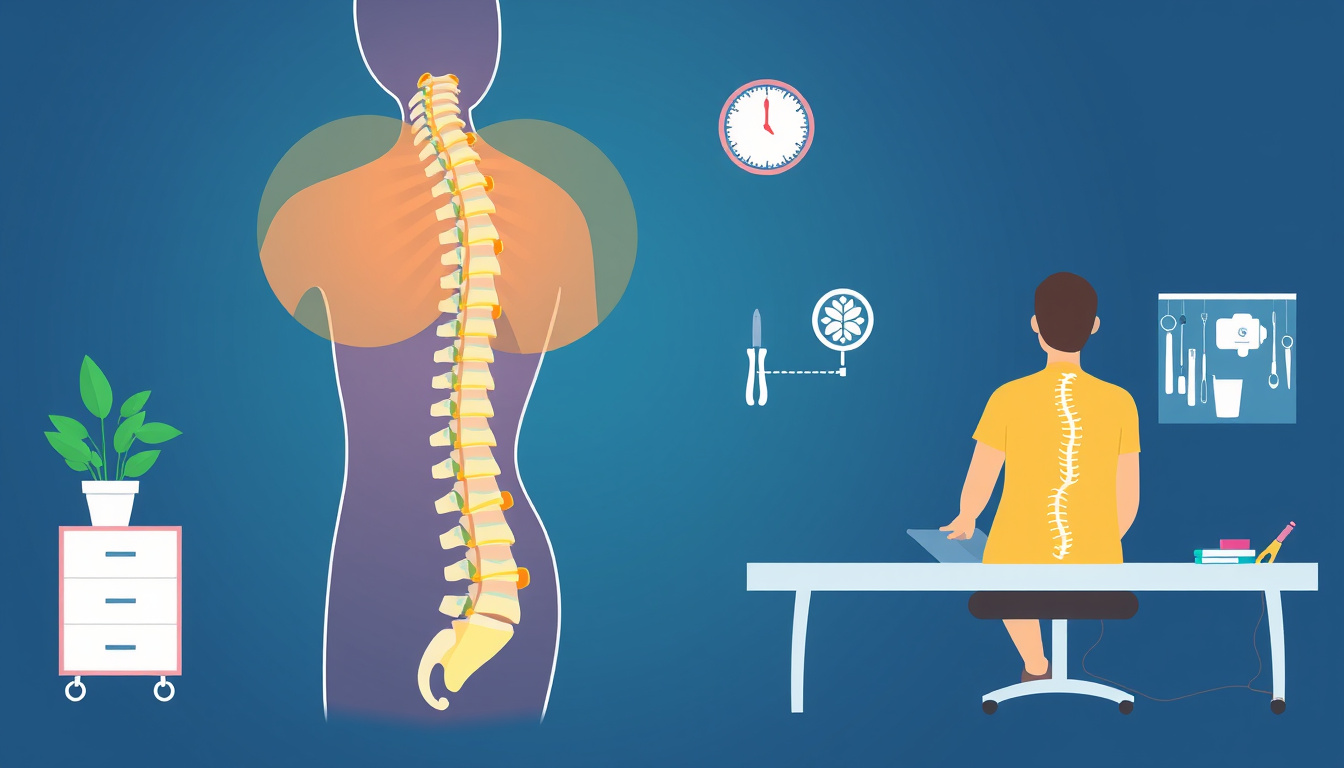
03 Jun Unlocking Optimal Well-Being: Your Guide to Comprehensive Spinal Health Assessment
In today’s fast-paced world, our overall well-being is often tied to how we care for our bodies, particularly our spines. A comprehensive spinal health assessment is a crucial step in identifying potential issues and enhancing your physical wellness. This guide will delve into the significance of spinal health, break down the components of a thorough assessment, and highlight techniques and actionable steps you can take to maintain or improve your spinal health, ultimately unlocking your optimal well-being.

Key Takeaways
- Spinal health is crucial for overall well-being and often impacts various bodily functions.
- Comprehensive spinal health assessments involve multiple components such as physical exams and imaging tests.
- Common techniques for assessing spinal health include X-rays, MRIs, and orthopedic evaluations.
- Interpreting spinal health assessment results helps identify potential issues and guide treatment options.
- Maintaining spinal health requires regular assessments and proactive action steps like exercise and proper posture.
Understanding Spinal Health: Importance and Overview
Spinal health is a critical aspect of overall well-being, as it directly influences our mobility, posture, and quality of life. A comprehensive spinal health assessment can play a pivotal role in identifying any potential issues before they become significant problems. This evaluation typically involves a thorough examination of the spine’s structure and function, helping to detect misalignments, stiffness, or other abnormalities that may be affecting your daily activities. Understanding the fundamentals of spinal health not only aids in preventative care but also empowers individuals to take proactive steps towards maintaining a healthy spine. By prioritizing regular spinal health assessments, you can ensure that your spine remains strong and properly aligned, thereby promoting better physical health and enhancing your overall lifestyle.
The Components of a Comprehensive Spinal Health Assessment
A comprehensive spinal health assessment is essential for diagnosing and managing back pain and spinal disorders effectively. This multifaceted evaluation involves several key components which work together to provide a holistic view of an individual’s spinal health. Initially, a thorough patient history is gathered, encompassing the onset of symptoms, lifestyle factors, and previous medical treatments. Following this, a detailed physical examination is conducted, assessing posture, range of motion, and reflexes, which can reveal underlying issues. Diagnostic imaging, such as X-rays, MRIs, or CT scans, is often utilized to visualize structural anomalies, while laboratory tests may be performed to rule out underlying conditions. Lastly, a functional assessment evaluates the impact of spinal health on daily activities and overall quality of life. Together, these components of a spinal health assessment help practitioners develop tailored treatment plans that address specific needs, ultimately leading to improved health outcomes.
‘You may not control all the events that happen to you, but you can control your attitude toward them; and in that, you will be mastering change rather than allowing it to master you.’ – Brian Tracy

Common Techniques Used in Spinal Health Assessments
When it comes to maintaining optimal wellness, a spinal health assessment is crucial for identifying any underlying issues that might affect overall health. Common techniques used during these assessments include physical examinations, such as postural analysis and range of motion tests, which help healthcare professionals evaluate the condition of the spine and surrounding musculoskeletal structures. Additionally, diagnostic imaging methods like X-rays or MRIs may be utilized to get a detailed view of the spine’s alignment and to check for any abnormalities. Manual examinations, where a practitioner palpates various areas of the spine, can also reveal tension or misalignments that might contribute to pain or discomfort. Each of these techniques plays a vital role in forming a comprehensive view of an individual’s spinal health, which can guide effective treatment plans and preventive measures.
How Spinal Health Affects Overall Well-Being
Spinal health is a crucial element of overall well-being, influencing not just physical comfort but also aspects of mental health and quality of life. Regular spinal health assessment can reveal misalignments and issues such as posture problems or nerve interference, which can lead to chronic pain or discomfort. When the spine is functioning optimally, it supports the nervous system, promotes better circulation, and can even enhance mood and cognitive function. Therefore, routine assessments carried out by healthcare professionals can provide insights and proactive measures to maintain good spinal health, ultimately leading to improved overall wellness. Addressing spinal health proactively ensures that individuals can lead active, pain-free lives, making it essential to understand its impact.

Interpreting Your Spinal Health Assessment Results
When you undergo a spinal health assessment, it’s vital to understand the results to make informed decisions about your back health. A spinal health assessment typically includes a thorough evaluation of your spine’s alignment, range of motion, and any discomfort you may be experiencing. The results can vary significantly based on individual conditions such as arthritis, herniated discs, or simply poor posture. It’s essential to interpret these results in the context of your personal health history and lifestyle. For example, a misalignment in your spine may suggest that you need to incorporate specific exercises or stretches into your routine, while chronic pain could indicate a need for more intensive treatment planning. Consulting with qualified healthcare professionals who specialize in spinal care can help you gain a clearer understanding of your assessment results, guiding you toward effective recovery strategies and an overall improvement in your spinal health.
Action Steps for Improving and Maintaining Spinal Health
Maintaining optimal spinal health is essential for overall well-being, and conducting a thorough spinal health assessment is the first crucial step in this process. Start by scheduling regular visits with a qualified chiropractor or healthcare professional who can provide a comprehensive evaluation of your spine’s alignment and function. This assessment will help identify any underlying issues such as misalignments, tension, or restricted mobility. In addition to professional assessments, incorporating good posture throughout daily activities can significantly enhance spinal health. Engaging in regular exercise, particularly core-strengthening workouts, supports the muscles surrounding the spine, providing stability and reducing the risk of injury. Moreover, practicing stress-reduction techniques such as yoga or meditation can alleviate muscle tension that contributes to poor spinal health. Remember, staying hydrated and maintaining a balanced diet rich in anti-inflammatory foods also plays a vital role in supporting the structures of your spine. By taking these action steps and regularly monitoring your spinal health through consistent assessments, you can enjoy a pain-free and active lifestyle.

Sorry, the comment form is closed at this time.